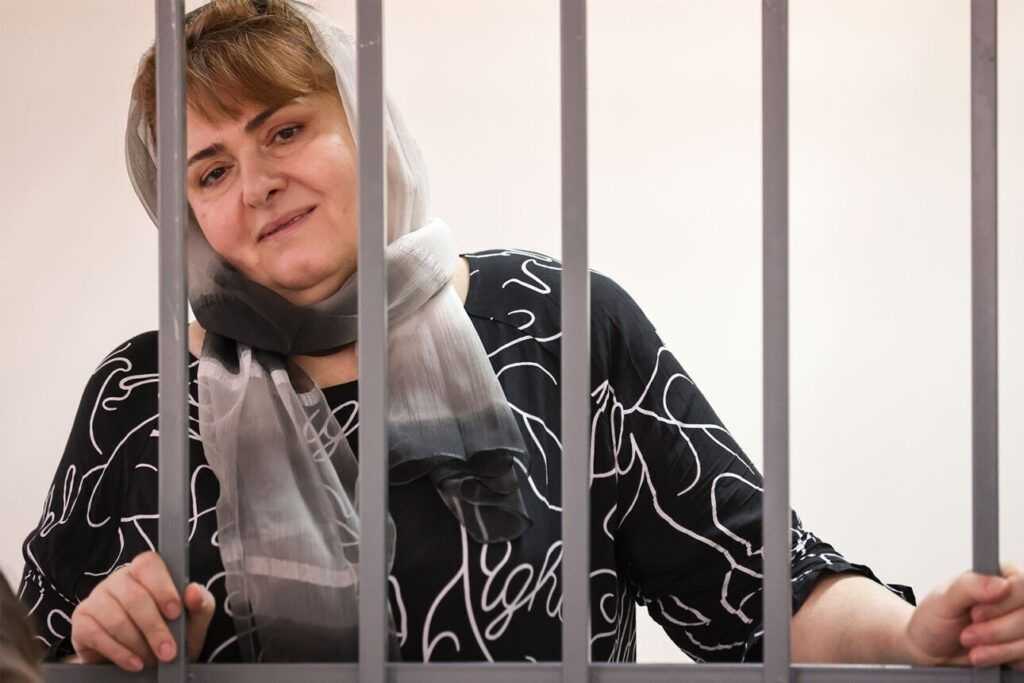Review | The Harvest — crypto mining in Georgia’s wine region
Misho Antadze’s debut documentary is a solemn ethnographic study of the coexistence between Kakhetian traditions and a futuristic industry.

★★★★☆
Misho Antadze’s debut documentary is a solemn ethnographic study of the coexistence between Kakhetian traditions and a futuristic industry.
Georgian filmmaker Misho Antadze’s first documentary feature The Harvest (2019) focuses on the cryptocurrency mining boom that took place in Georgia in the late 2010s. The film centres on the eastern region of Kakheti, Georgia’s foremost wine region, its soil nourished by the River Alazani, which flows southeast from the Greater Caucasus range to the Gombori mountains in the south.
The first shot in The Harvest is of a boxy old silver television, the fuzzed screen showing a programme on the Georgian Technology Summit, for which industry heads have come together to discuss Georgia’s future in IT and AI. A female robot gives a speech on the marvellous prospects of AI-human collaboration — the audio is crackly.
The camera then opens out into the room: grubby pink wallpaper, a portrait of Stalin, a row of meat hooks, and a man with his back to the audience hacking at a slab of pork with an axe. The breathless advancements of techno capitalism seem light-years away from this rustic scene.
And yet, as The Harvest proceeds to show, they have in reality found a strange and apparently peaceable coexistence in Kakheti.
According to one metric cited by the World Bank, in 2018, Georgia, with its population of under 4 million, ranked third in the world for crypto-mining. Countries where electricity is relatively cheap and which have (or had; laws have been tightened since) lax regulations, attracted big players in mining, all accompanied by citizens setting up home rigs for private use.
Kakheti was not the heart of Georgia’s mining economy, but the poetic conversion of agricultural storehouses into data centres there, as well as the region’s beauty and winemaking fame, perhaps led Antadze to choose it as the setting for his study.
The Harvest does not provide any insight in interview form as to how this new industry has affected Kakhetians, nor does it, in any overt way, come down firmly for or against cryptocurrency mining. It’s a documentarian’s documentary — 77 minutes of lengthy shots largely free of dialogue, drawing its impact from the contrast between the natural beauty of the landscape and its related traditions and the mining machines.
This contrast is emphasised by the film’s soundscapes. The machines give off an unbearable insectoid hum, it has the opposite effect of white noise. At one point Antadze plays on the aural similarity by cutting to a man attending to his beehives.
While there’s no manifest commentary on the ecological drain of crypto mining, Antadze does spend some time filming the water pipes running into the data centre. Its overseer, an elderly man in a wheelchair, is filmed watering the flowers outside with a different pipe. In another scene, men in construction uniforms fit yet more pipes along the street of a little town, while a man in a horse and cart trundles by.
But it’s not as if Antadze is trying to juxtapose a kind of prelapsarian agricultural idyll with these ‘diabolical’ mining systems. His approach isn’t that of a Luddite: Antadze films all sorts of other technologies used in farming, like drills for planting vine posts, and a drone employed to assess crops. His shot of a hunter with his gun reads as a nod to another, much older, form of human-technological partnership.
In one shot we see a man fiddling with his little domestic crypto-mining machine. The door is ajar, it’s twilight, and a dog is barking outside. There’s nothing particularly sinister about the scene. If anything it’s kind of reminiscent of a post-apocalyptic fantasy, as if these machines have been dug up a thousand years after some human-race-eliminating event.
The film’s one tonal shift comes at the end. During a thunderstorm, Antadze returns to the large-scale crypto mining storehouse to film it in the dark. Its screens are lit intermittently and eerily by flashes of lighting, the machine whirs and thrums, and Antadze’s slow panning shot across the rows and rows of rhythmically glowing computers renders the whole thing very ghostly, in the way technology can be when it appears to operate of its own accord.
All in all, The Harvest comes across as a curious and elegantly constructed study of how this strange new phenomenon has been folded into the production of largely agricultural societies. Since the film’s release, the Georgian government has been tightening mining regulations due to the pressure on electricity grids. The boom has therefore evolved as Georgia attempts to position itself as a maturely regulated crypto hub as opposed to a kind of Wild West for mining. Hobbyist miners, however, like the one we see in The Harvest, have largely been unaffected.
Film details: The Harvest (2019), directed by Misho Antadze. It is available to stream on DaFilms.









